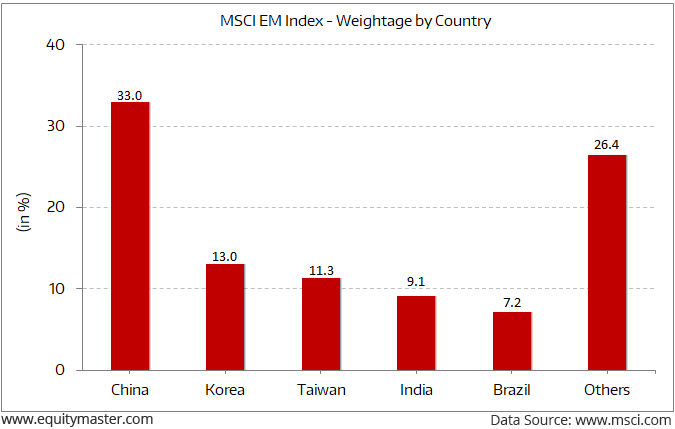- Home
- Todays Market
- Indian Stock Market News August 14, 2019
Sensex Opens Marginally Up; Rupee Slumps to 6-Month Low Wed, 14 Aug 09:30 am
Asian share markets are higher today as Chinese and Hong Kong shares show gains. The Shanghai Composite is up 0.8% while the Hang Seng is up 0.6%. The Nikkei 225 is trading up by 0.6%. US stocks closed higher on Tuesday after an announced delay of planned tariffs on some Chinese imports brought buyers back to the equities market in a broad-based rally. Tech stocks headed up by Apple Inc led all three major US indices into the black following the announcement, which calmed fears over the US-China trade war and growing signs of imminent recession.
Back home, India share markets opened on a positive note. The BSE Sensex is trading up by 99 points while the NSE Nifty is trading up by 31 points. The BSE Mid Cap index and BSE Small Cap index opened up by 0.6% and 0.4% respectively.
Sectoral indices have opened the day on a mixed note with metal stocks and realty stocks witnessing maximum buying interest. Healthcare stocks and consumer durables stocks have opened the day in red.
The rupee is currently trading at 71.40 against the US$.
--- Advertisement ---
Investment in securities market are subject to market risks. Read all the related documents carefully before investing

Details of our SEBI Research Analyst registration are mentioned on our website - www.equitymaster.com
----------------------------------------
The Indian rupee opened with a gap down at 71.16 and ended the day lower at 71.40, the lowest closing level in past six months, amid rising geopolitical tensions across the globe.
Crash in Argentine Peso and eventual stock market rout, reported increase in bad loans in the Chinese banking system, inverting German yield curve, non-ending protests in Hong Kong and recent devaluation of Yuan below multi-year low of 7 by China has triggered a fresh round of sell-off in equities and emerging market currencies.
Increasing chances of continuing trade conflict between US and China till US Presidential elections in 2020, recent indication by Reserve Bank of Australia about the possibility of reducing rates to sub-zero levels as in Switzerland and Japan and the argument that further rate cuts by central banks would inflate a possible bubble created by a decade of cheap money, point to worrying global scenario.
The rupee has been steadily weakening since the beginning of the month losing nearly 3.5%.
--- Advertisement ---
Investment in securities market are subject to market risks. Read all the related documents carefully before investing
Choose Your Pick
Unnecessarily Risky Small Caps vs Small Caps Brimming with Opportunity
Discover the Small Cap Strategy Thousands of Equitymaster Subscribers Use
I'm interested
Details of our SEBI Research Analyst registration are mentioned on our website - www.equitymaster.com
---------------------------------------------
Because, the US Dollar index has softened since the Fed rate cut and the rupee instead of strengthening, has instead lost value against the dollar, shows inherent weakness in our currency and broad concerns overstate the economy.
Also, more than expected rate cuts by Central banks of Australia, New Zealand and Thailand along with India shows that central banks across the globe are concerned with the growth prospects of their respective economies.
A major reason for the weakness could be FPIs pulling out funds. FPIs have pulled out Rs 123 billion till date in July.
The reason for this are many.
From slowdown in the economy to the budget...
But, can the real reason be external?
In March this year, the Morgan Stanley Capital International (MSCI) announced it would increase the weightage of Chinese A shares (stocks trading in mainland China) by 4 times. These shares form around 10% of total Chinese shares in the index.
--- Advertisement ---
Investment in securities market are subject to market risks. Read all the related documents carefully before investing
India's Lithium Megatrend is an Emerging Opportunity for Investors
We all know how oil producing countries made fortunes in the last century.
But now, the world is moving away from oil... and closer to Lithium.
Lithium is the new oil. That's the reason why India is focusing heavily on expanding its lithium reserves.
If you can tap into this opportunity, then there is a potential to make huge gains over the long term.
See Details Here
Details of our SEBI Research Analyst registration are mentioned on our website - www.equitymaster.com
---------------------------------------------
FPIs investing in passive funds follow the MSCI EM index for investments in emerging markets.
A comparison of India's weightage with China in the MSCI EM index provides us clues on the recent outflows from FPIs.
It also explains the announcement to reduce promoter shareholding in the budget.
Will we see a similar FPI inflow in to Indian stocks?
Will India be the Next Hot FPI Destination?
Looking at the recent inflow in to the Chinese stock markets, it seems very likely.
Moving on to the news from the economy. As per the data released by the National Statistics Office (NSO), India's retail inflation stayed nearly steady in July halting an eight-month surge despite firmer food prices as oil price continued to stay subdued.
Consumer food price inflation inched upto 2.36% in July, compared to an upwardly revised 2.25% in June.
Crude oil price has been benign in recent past. In international markets, Brent crude futures were up 8 cents from the previous settlement at US$58.65 a barrel on Tuesday.
Retail inflation measured by changes to Consumer Price Index (CPI) stood at 3.15% in July, marginally below the 3.18% reported in June.
Retail inflation staying within the RBI's comfort range of 4% within a band of plus or minus 2% could encourage the central bank to consider a further reduction in policy rates considering the deceleration in industrial output seen in June owing to a slowdown in manufacturing and mining output.
Data released last week showed that factory output as measured by index of industrial production (IIP) had inched up 2% in June, compared to 3.1% in May and 7% in June last year.
The central bank had cut its repo rate four times so far this year amid benign inflation and sobering signals from economic indicators to stimulate growth, which had fallen to its slowest pace in nearly five years in the March quarter.
Indian economy which expanded at 8% in the first quarter of FY19 subsequently slowed down to 5.8% in the fourth quarter ending March 2019.
With the slowdown in growth rate affecting profits and jobs, businesses are expecting fiscal measures from the government to stage a turnaround.
To know what's moving the Indian stock markets today, check out the most recent share market updates here.
For information on how to pick stocks that have the potential to deliver big returns, download our special report now!
Read the latest Market Commentary



Equitymaster requests your view! Post a comment on "Sensex Opens Marginally Up; Rupee Slumps to 6-Month Low". Click here!
Comments are moderated by Equitymaster, in accordance with the Terms of Use, and may not appear
on this article until they have been reviewed and deemed appropriate for posting.
In the meantime, you may want to share this article with your friends!